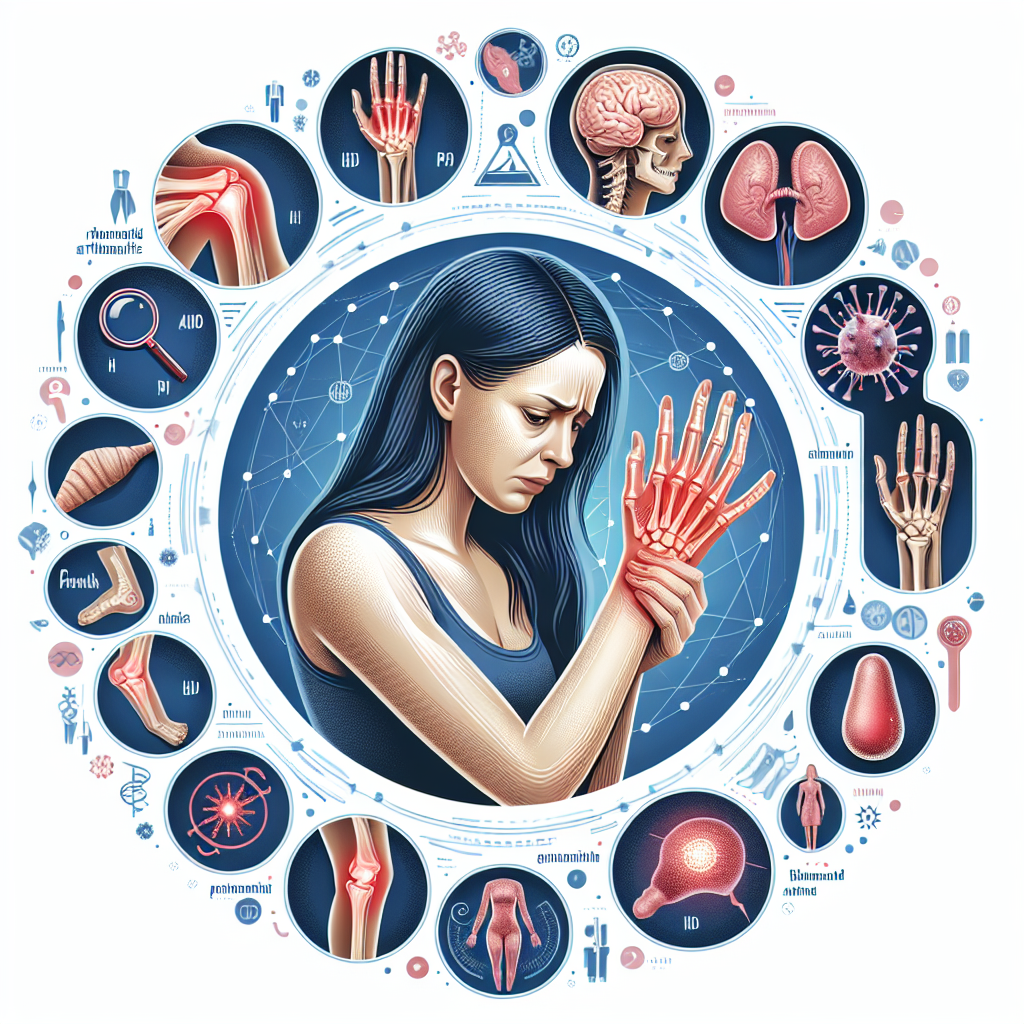Rheumatoid Arthritis (RA) is a chronic disease that affects the joints in the body, causing inflammation, stiffness, and pain. This autoimmune disorder is characterized by the immune system attacking healthy cells in the body, resulting in inflammation and the thickening of the synovial membrane located within the affected joints. Over time, this can lead to a degradation of the cartilage and bones, compromising the integrity of the joint itself.
Symptoms of Rheumatoid Arthritis
The symptoms of Rheumatoid Arthritis are diverse and can vary from person to person. However, there are predominant symptoms that are usually present in most patients. The most visible signs include tender, swollen joints that may feel warm to the touch. Patients may also experience stiffness in the joints, particularly in the morning or after periods of inactivity.
Other symptoms of RA can include fatigue, fever, and weight loss. The joints impacted by RA may also display a symmetrical pattern of involvement, meaning that if one wrist or knee has it, the other one will likely have it too. These symptoms can occur in flares, where they intensify for a period and then gradually decrease.
RA is a systemic disease, meaning it can affect the entire body. Therefore, in some cases, it can also affect other organs in the body such as the skin, eyes, lungs, heart, blood vessels, and nerve tissue.
Causes of Rheumatoid Arthritis
The exact cause of RA is unknown, but it is fundamentally an autoimmune disease. This means that the body’s immune system misguidedly attacks healthy tissues. It is believed that in RA, the immune response is primarily directed at the synovium, the thin membrane lining the joints. Persistent inflammation of the synovium eventually leads to the loss of shape and function of the joint.
There are various factors thought to be involved in the development of RA. This includes genetic factors, as individuals with a family history of RA are more likely to develop the disease. Certain genes involved in the immune system may be associated with a higher risk of rheumatoid arthritis. Environmental factors may play a role too, with smoking viewed as a significant risk factor.
Other potential risk factors include age, sex, and obesity. RA can occur at any age, but it is more prevalent in people over the age of 40. It is also more common in women than men. Additionally, being overweight can increase your chances of developing RA, as it puts additional stress on your joints, especially the knees, hips, and feet.
Conclusion
Understanding the symptoms and causes of Rheumatoid Arthritis is a significant step towards managing the disease. This autoimmune disorder can cause significant disruption to a person’s life due to severe pain and restricted mobility. The exact cause of RA remains unknown; however, it primarily results from the immune system attacking the body’s healthy tissues. Recognizing early symptoms and seeking prompt medical attention can improve treatment outcomes and minimize damage caused to joints and other organs.
Frequently Asked Questions
- 1. What is Rheumatoid Arthritis?
- It is a chronic, inflammatory disorder that primarily affects joints, causing pain, swelling, and stiffness.
- 2. What are the early signs of Rheumatoid Arthritis?
- Early signs can include joint stiffness particularly in the morning, joint pain, loss of joint function, and joint swelling.
- 3. Can Rheumatoid Arthritis be cured?
- There is currently no cure for Rheumatoid Arthritis. However, early diagnosis and appropriate treatment can help manage the symptoms and slow down the disease progression.
- 4. Can diet affect Rheumatoid Arthritis?
- While there’s no specific “arthritis diet,” certain foods can help fight inflammation and strengthen the immune system, possibly improving RA symptoms.
- 5. Can Rheumatoid Arthritis affect young people?
- Yes, Rheumatoid Arthritis can affect individuals of all ages, though it typically begins in middle age.

Leave a Reply